In the dynamic landscape of organizational change, leaders often grapple with how to gauge their initiatives’ effectiveness accurately. Traditionally, surveys have been the go-to tool, but let’s face it—they’re not everyone’s cup of tea. In this piece, we’re venturing beyond the conventional, exploring innovative strategies that promise a more holistic view of change measurement. From qualitative insights to cutting-edge analytics, we’ll guide you through alternatives that not only capture the essence of change but also engage your teams in meaningful ways. Perfect for change leaders and executive sponsors, this article offers actionable insights to elevate your change measurement game. Ready to transform how you assess organizational change? Join us in redefining success, and don’t miss the chance to enhance your toolkit with a downloadable change scorecard template at measureyourchange.com.
Introduction to the Limitations of Surveys
Surveys have long been the backbone of measuring organizational change outcomes. They offer a structured mechanism to gather feedback across diverse groups within an organization. However, the reliance on surveys as a primary tool for measuring change has revealed significant limitations that can skew the data and, consequently, the insights derived from it. Let’s delve into these challenges, spotlighting why change leaders and executive sponsors need to rethink their approach to evaluating the impact of change initiatives.
Low Response Rates: A persistent issue with surveys is their notoriously low response rates. Busy schedules, survey fatigue, a perceived lack of direct benefit, and low trust in the organization may lead many employees to bypass participating. This apathy towards surveys can result in a feedback loop that lacks representation from all segments of the workforce, especially those who may be most affected by the change or those who are disengaged to begin with. The outcome is a skewed understanding of the change’s effectiveness, potentially leading to misguided decisions and strategies.
Biased Responses: Surveys are also susceptible to various biases. Response bias, where participants may answer in a manner they think is expected or socially acceptable, can distort the real picture of how changes are received. Additionally, the framing of questions and the survey’s context can lead to biased responses, further muddying the waters of genuine feedback. This issue is compounded in environments where trust is low, and employees may fear reprisal for negative feedback.
Inability to Capture Nuanced Feedback: One of the most significant drawbacks of surveys is their limited capacity to grasp the depth and nuance of employee experiences and sentiments. While open-ended questions can offer some insights, they require significant effort to synthesize that data and still restrict the respondent’s ability to fully convey complex feelings, thoughts, and suggestions. This limitation is particularly problematic when assessing change initiatives’ subtleties, where the emotional and psychological impacts on employees are as critical as the tangible outcomes.
Given these limitations, it’s clear that relying solely on surveys to measure organizational change can lead to an incomplete, and sometimes inaccurate, understanding of how initiatives are truly affecting the organization and its people. This recognition prompts the need for a broader, more holistic approach to capturing feedback and measuring change, one that supplements traditional surveys with methods that can capture the full spectrum of employee experiences and reactions to change. By expanding the toolkit for measuring change, leaders can gain a richer, more accurate view of the impacts of their initiatives, enabling them to make more informed decisions and drive more effective change strategies.
Qualitative Approaches
In the quest for a deeper understanding of organizational change impacts, qualitative approaches stand out for their ability to illuminate the why and how behind employee reactions. Interviews, focus groups, and open forums enable a dive into the emotional and psychological nuances of change, offering insights that quantitative methods like surveys might miss. However, while these methods are invaluable for capturing rich, detailed feedback, they also come with their own set of challenges. The significant effort required to conduct, analyze, and synthesize qualitative data means these approaches must be employed judiciously. It’s crucial to balance the depth and breadth of insights gained with the resources invested, ensuring that the level of effort is commensurate with the anticipated value and impact. This section explores the strengths of qualitative methods in extracting deeper insights into employee sentiments and reactions to change, while also acknowledging the strategic considerations necessary to maximize their benefits.
Interviews: One-on-one interviews provide a private space where employees can express their thoughts, concerns, and feelings about the change without the pressure of conforming to group dynamics. This method allows for a detailed exploration of individual experiences, offering insights into how change affects employees. Interviews can uncover hidden challenges, personal successes, and suggestions for improvement that might not surface in a more public or structured setting. By tailoring questions to each interviewee, leaders can gain a multifaceted understanding of the change initiative’s effectiveness and impact.
Focus Groups: Focus groups bring together a diverse cross-section of the organization to discuss the change. This setting encourages interaction, with participants often building on each other’s observations and ideas, leading to a richer collective understanding of the change’s impact. The dynamic nature of focus groups can unveil perspectives that individuals may not have considered in isolation, highlighting shared experiences and concerns. Facilitators can probe deeper into topics as they emerge, guiding the conversation to explore complex issues and identify common themes across different groups within the organization.
Open Forums: Open forums offer a larger, more democratic platform for discussion, enabling a broader range of employees to voice their opinions and share experiences. These sessions can foster a sense of community and collective problem-solving as employees hear directly from peers and leaders alike. Open forums also signal organizational openness to feedback, which can strengthen trust and engagement, critical components for successful change management. While managing these discussions requires skill to ensure constructive dialogue, the insights gained can be invaluable for understanding the broad impact of change initiatives.
These qualitative approaches serve as potent tools in the change leader’s arsenal, allowing for a nuanced exploration of the human dimensions of organizational change. They unlock a deeper understanding of employee sentiments, reactions, and the complex interplay of emotions and perceptions that drive organizational dynamics. This rich, qualitative feedback is essential for moving beyond mere metrics to grasp the heart of how change unfolds within an organization. However, it is important to balance the depth of insight they offer against the effort required to implement and analyze them effectively. By thoughtfully integrating qualitative data into their change measurement strategies, leaders can ensure that their initiatives are informed by a profound understanding of employee experiences and executed with the right blend of empathy and precision.
Observational Techniques
Observational techniques offer a dynamic lens through which change leaders and executive sponsors can assess the real-time impact of change initiatives within their organizations. Unlike surveys or interviews that rely on self-reported data, direct observation provides an unfiltered view of how changes manifest in the workplace through employee behaviors and interactions. This method allows leaders to see firsthand whether the strategic goals of a change initiative are being met and how closely employee actions align with the desired outcomes. This section delves into the power of observational techniques in gauging change adoption and effectiveness, emphasizing the crucial role of defining and measuring ideal behaviors.
Defining Ideal Behaviors: The first step in leveraging observational techniques effectively is to clearly define the behaviors that exemplify the successful adoption of the change initiative. These behaviors should be directly linked to the organization’s strategic goals, offering a concrete framework for what success looks like on the ground. By identifying these ideal behaviors, leaders can create a focused lens for observation, enabling them to pinpoint exactly where alignment or misalignment occurs within the team or organizational dynamics.
Observation in Action: Observational techniques can vary in formality, from structured walk-throughs and shadowing to more informal, spontaneous observations. Regardless of the approach, the objective remains the same: to gather tangible evidence of how changes are being internalized and acted upon by employees. This can include noting how individuals adapt to new processes, how collaboration patterns shift, or how leadership behaviors influence team dynamics. The key is to observe without directly interfering, allowing for a natural capture of behaviors as they unfold.
Identifying Relevant Metrics: Change teams can significantly benefit from identifying organizational metrics expected to shift following the widespread adoption of new behaviors. Often already tracked as part of routine organizational performance assessments, these metrics can be strategically incorporated into a change scorecard. This scorecard serves as a holistic tool, enabling both the change team and leadership to quantitatively measure the change initiative’s success. By linking observed behavioral changes to specific, measurable outcomes in the scorecard, organizations can more accurately gauge the extent of adoption and the impact of the change on overall organizational performance. This dual approach of qualitative observation and quantitative measurement provides a comprehensive overview of the change’s effectiveness, offering a robust framework for decision-making and further strategic adjustments.
Guiding and Measuring Change: With ideal behaviors as the guiding framework, observational data becomes a powerful tool for guiding and measuring complex strategic changes. Leaders can identify gaps between current and desired behaviors, providing targeted feedback, learning, and intervention where necessary. This approach not only helps in fine-tuning implementation strategies but also in creating measurable benchmarks for change progress.
If change leaders were to take away one pivotal strategy from this discussion, it would be the importance of defining ideal behaviors as the cornerstone of designing, executing, and measuring change. Observational techniques, grounded in these defined behaviors, offer a direct and insightful way to evaluate the impact of change initiatives. By observing how employees embody the envisioned change, leaders gain a clear, actionable perspective on what’s working, what’s not, and where to channel their efforts for maximum effect. This hands-on approach enriches the understanding of change dynamics and ensures that organizational strategies are pragmatically aligned with real-world behaviors, driving meaningful progress toward strategic goals.
Innovative Tools and Technologies
Innovative tools and technologies have emerged as game-changers, offering new ways to measure and understand the impact of change initiatives. Sentiment analysis, AI-driven analytics, and employee engagement platforms are at the forefront of these advancements, providing deep insights into the workforce’s pulse and facilitating a more nuanced approach to change measurement. This section explores how these technologies are revolutionizing how change is assessed.
Sentiment Analysis: Sentiment analysis harnesses natural language processing (NLP) to evaluate the emotions and sentiments expressed in written communication, such as emails, survey open-ended responses, social media, and internal communication platforms. By analyzing the tone and sentiment behind employee feedback, organizations can gain a real-time understanding of how changes are perceived across different levels of the organization. This technology allows for identifying common themes and concerns that might not be evident through traditional metrics, providing a more detailed picture of the organizational climate during periods of change. These tools can significantly reduce the level of effort of qualitative data analysis in measuring change.
AI-Driven Analytics: AI and machine learning algorithms can process vast amounts of data to identify patterns, trends, and predictive insights that human analysts might overlook. These tools can analyze employee behavior, productivity metrics, and other change-related data to forecast potential challenges and pinpoint areas where change initiatives are most and least effective. By leveraging AI-driven analytics, organizations can make data-informed decisions, tailoring their change management strategies to address specific needs and optimize outcomes.
Employee Engagement Platforms: Modern employee engagement platforms offer more than just survey tools; they provide continuous, interactive channels for feedback, ideation, and engagement. These platforms can facilitate pulse surveys, instant polls, and forums for discussion, allowing for ongoing measurement of change sentiment and engagement. Moreover, they can segment data by departments, teams, or demographics, enabling targeted analysis and interventions. The real-time nature of these platforms means organizations can quickly adapt their strategies in response to feedback, ensuring change initiatives remain aligned with employee needs and expectations.
By considering the integration of sentiment analysis, AI-driven analytics, and/or employee engagement platforms into measurement strategies, change leaders can access deeper, data-driven insights. This enhances the accuracy of change impact assessments and empowers organizations to navigate change with greater agility and precision. Adopting these technologies will be pivotal in crafting responsive, informed, and effective change management practices as we move forward.
Feedback Loops and Continuous Improvement
In the tapestry of organizational change, the creation of continuous feedback loops stands as a pivotal thread, weaving together the insights garnered from various measurement strategies into a cohesive narrative of progress and areas for improvement. These loops are essential for fostering an environment where employees feel genuinely heard and empowered to contribute to the change process. Organizations can cultivate a culture of openness and continuous improvement by advocating for a more informal, conversational approach to feedback, where every voice is valued and insights drive action. This final section emphasizes the importance of integrating diverse feedback mechanisms into a balanced scorecard, ensuring the organization captures a dynamic, real-time picture of the change effort’s impact.
The Importance of Employee Ownership: At the heart of effective feedback loops is the principle of employee ownership. When individuals feel their input genuinely influences outcomes, they are more engaged, motivated, and committed to the change initiative. This sense of ownership enhances the quality and relevance of feedback, providing change teams with rich, actionable insights. Employing strategies such as open forums, suggestion boxes, and interactive engagement platforms enables a less formal yet highly effective avenue for capturing the workforce’s pulse.
Balancing Feedback Mechanisms: While qualitative and quantitative measures offer valuable perspectives on change, the magic lies in their balance. Quantitative data from surveys, analytics, and performance metrics provide a snapshot of progress and areas of concern. In contrast, qualitative feedback from interviews, focus groups, and direct observations offers depth and context to these insights. A well-constructed change scorecard integrates these diverse feedback loops, presenting a balanced view that combines regular snapshots with deep dives into employee sentiment and behavior.
Crafting a Responsive Scorecard: Creating a change scorecard that reflects this balance is crucial for capturing the multifaceted nature of organizational change. This scorecard should be dynamic, allowing for regular updates based on ongoing feedback and the flexibility to adjust strategies in response to emerging challenges. By incorporating a variety of feedback mechanisms, the scorecard becomes a living document that not only tracks progress but also guides the change team in making informed, agile adjustments to the change initiative.
Establishing continuous feedback loops and crafting a balanced, responsive scorecard are fundamental to the success of any change effort. These strategies ensure that measurement is not just a box-checking exercise but a powerful engine for continuous improvement and employee engagement. By valuing and acting upon the insights gathered from the workforce, organizations can navigate the complexities of change with greater empathy, agility, and effectiveness, paving the way for a culture that not only embraces change but thrives on it.
Conclusion
In navigating the intricate journey of organizational change, it’s clear that moving beyond conventional measurement tools like surveys is crucial. Through exploring qualitative approaches, observational techniques, and innovative technologies, we’ve uncovered a spectrum of strategies that promise a richer, more nuanced understanding of change impacts. Each approach, from deep-diving into employee sentiments through interviews and focus groups to leveraging AI-driven analytics for predictive insights, contributes to a comprehensive picture of how change unfolds within an organization. The key takeaway is the importance of establishing continuous feedback loops, which ensure that employees feel heard and provide leaders with the agility to respond to emerging challenges effectively. A balanced, responsive change scorecard, enriched with qualitative and quantitative feedback mechanisms, emerges as a critical strategy for capturing the multifaceted nature of change. This holistic approach empowers organizations to navigate change with greater precision, empathy, and effectiveness, ultimately fostering a culture of continuous improvement and engagement. To take the next step in elevating your change management practice, I encourage you to download the change scorecard template at measureyourchange.com. This tool is designed to help you integrate these insights into your change initiatives, ensuring a robust, actionable framework for measuring success and driving meaningful organizational transformation.








